Jun 9 2016
Hill / Random / Heart Rate / Manual
Wednesday – traveled to Brussels.
Going through the Vienna train station I noticed there was a wifi network called “refugees”. It’s easy to be cynical about it. But it shows how important access to information is nowadays, for everybody.
At Vienna airport I saw a Boeing 787 Dreamliner from Ethiopian Airlines. It was a nice sight between all the Austrian Airbuses and Fokkers.
This morning, I found my regular hotel’s fitness room completely revamped. Wow!
- The cycling machines were now wall-facing. Apparently pedalists were staring too much at the other users of the fitness room. 🙁
- The water fountain had been moved by 1.5 meters to the left and around the corner.
The LifeFitness equipment still offered the usual menu:
- Hill
- Random
- Heart Rate
- Manual
I usually choose Random but today I felt adventurous, so I did treadmill on Hill, elliptical on Manual / Intervals and the cycling on Manual / Watts. It was a completely new experience! Still the same old track/hill/map/bar chart choice though:

Ergometer Physics
On the train and during the flight, I have been playing a bit with my physics of rowing toybox. I never really looked at the erg model, so when a discussion was stimulated recently on rec.sport.rowing about the part of the power that is not captured by the PM, I started improving my erg model.
As a result, I have two erg models now. Both have their weaknesses, but they seem to agree on the important bit.
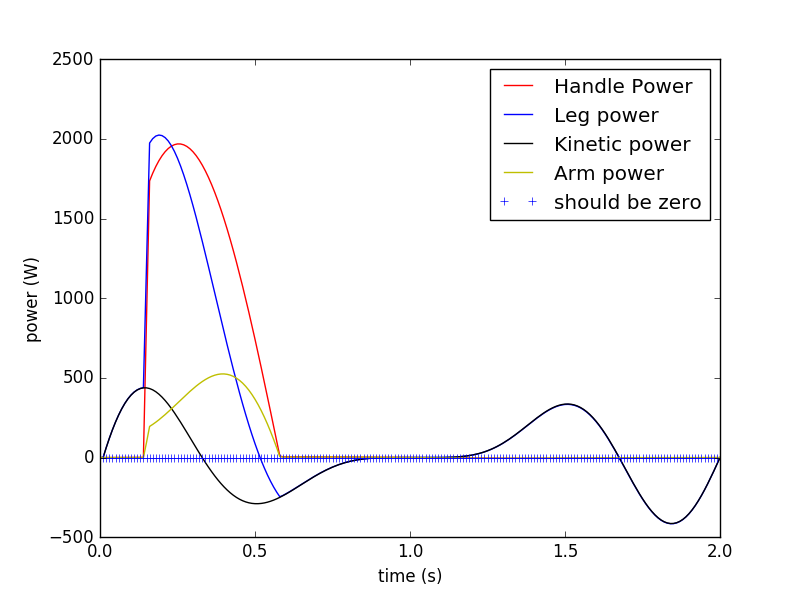
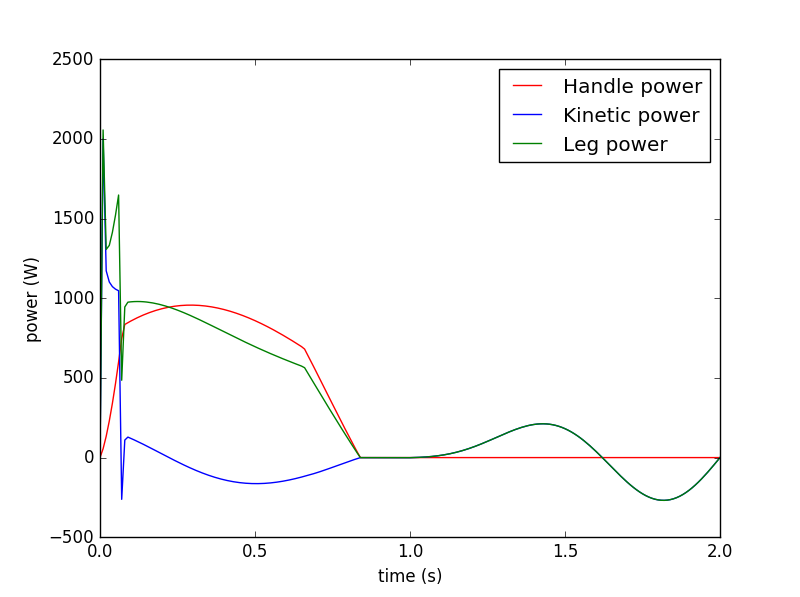
I apologize for the color inconsistency between the two graphs (this was done on an airplane!) and clearly there is a lot to improve, but here are the topics of discussion.
- During the drive (first 0.8 seconds of this graph), leg power is used to accelerate the rower’s body and to accelerate the flywheel. The acceleration of the flywheel is done by the force on the handle. That is the red curve in both graphs.
- Half way during the drive, the rower’s body starts to slow down. There has to be a negative force on the rower’s body. There are two sources of this, one is the handle force and the other is the leg force. By pushing less hard on the legs and starting to swing the back, the rower slows down. In the top graph, you can see “leg power” go negative. This is where the rower is actually hanging/pulling in the footstretcher in order to stop. If he had rown strapless, he would shoot off the slide.
- During the recovery, the rower has to accelerate, then break. One is a positive power (force and velocity have the same direction), the other negative.
The discussion is about how to count these negative lobes. Clearly, they are not measured on the PM. The human leg is not a spring, so you cannot store energy for reuse during the drive, so this negative power has to be accounted somehow. In my model, I just take the absolute value of this power and add it to the total power balance.
It is also clear that the bulk of this extra power is generated during the recovery. During the drive phase, a large part of the kinetic energy in the rower’s body can be transferred to the handle effectively.
Don’t catch me on the numbers and exact shapes of the graphs. It was really toying around trying to explain the principles.
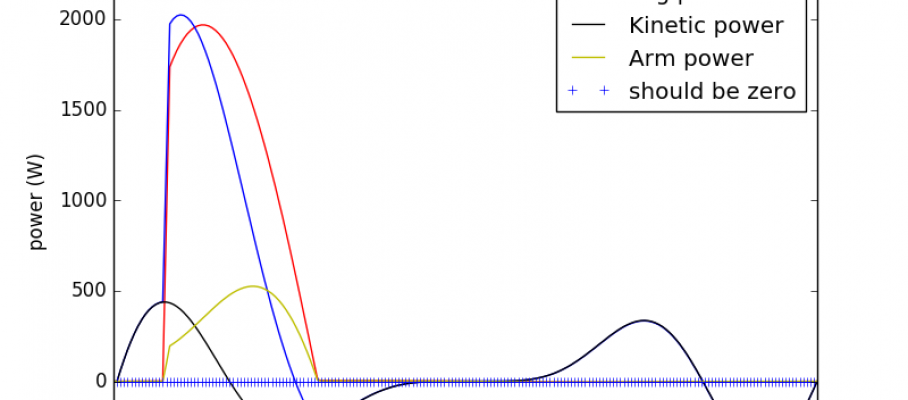
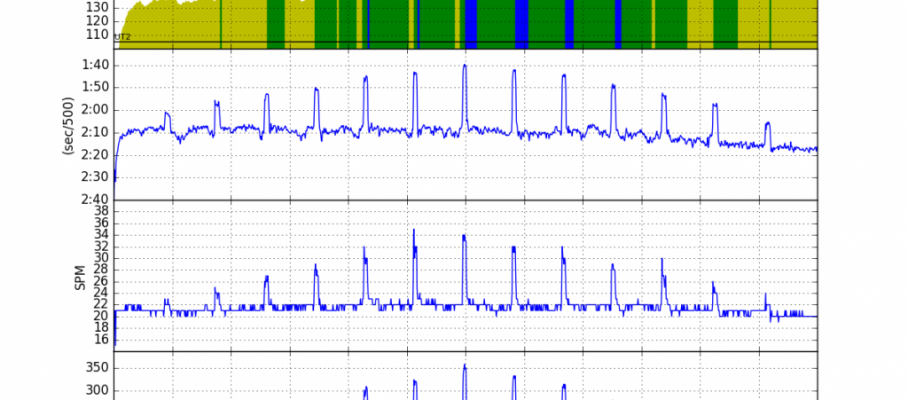
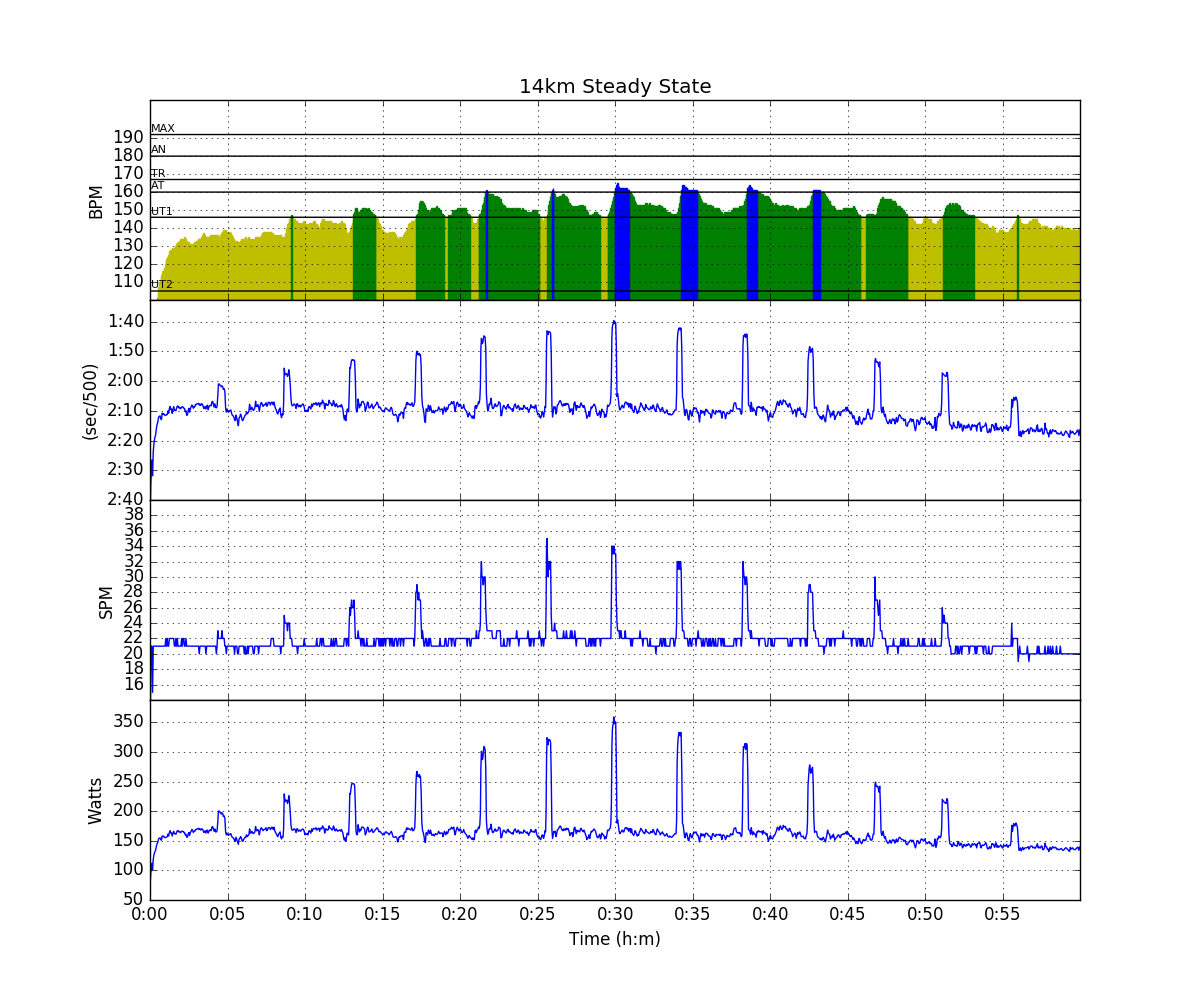
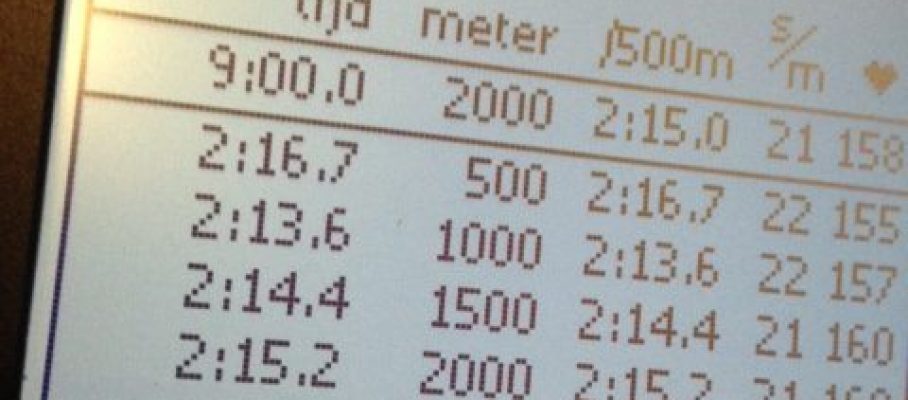
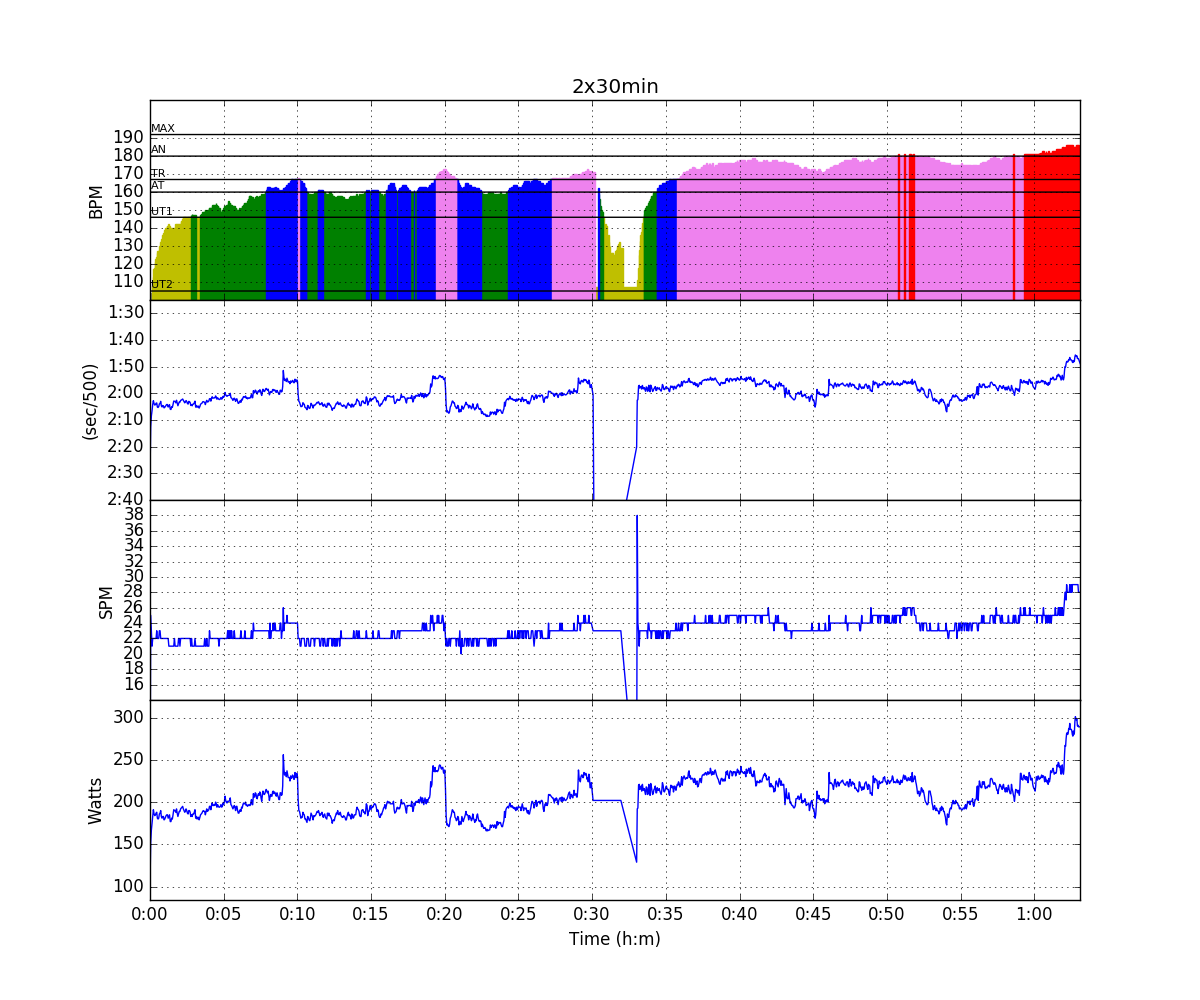

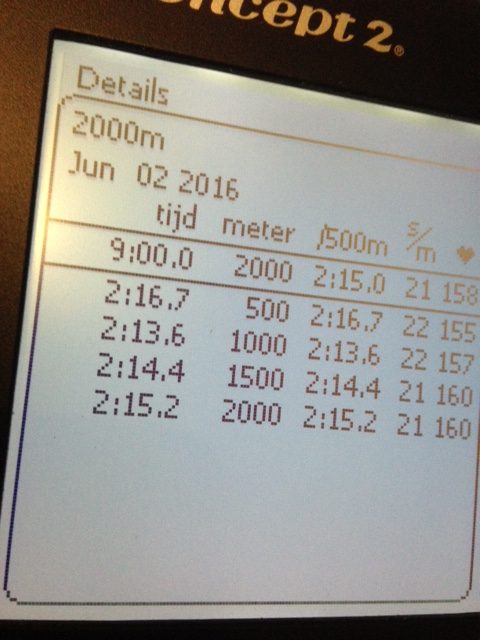

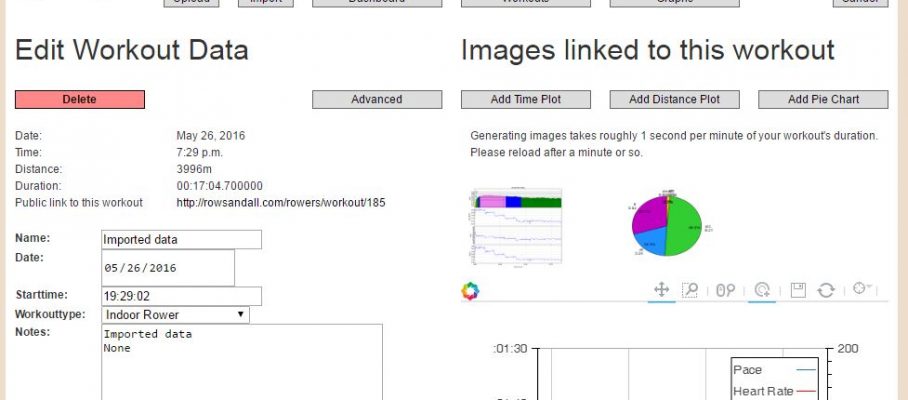




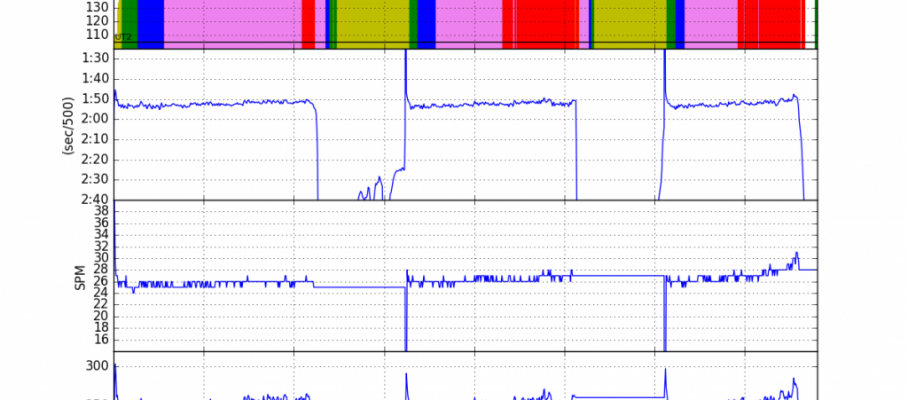
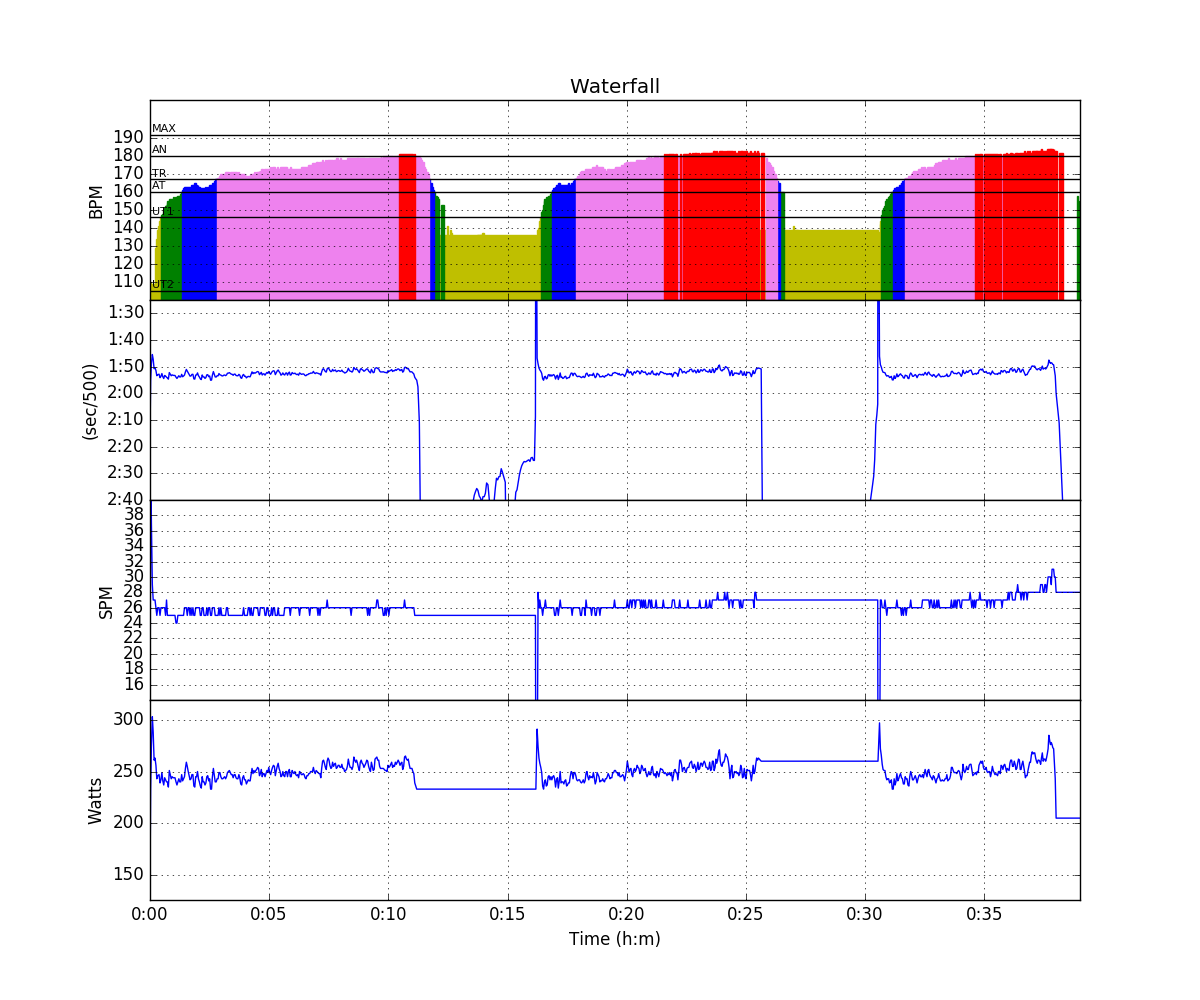
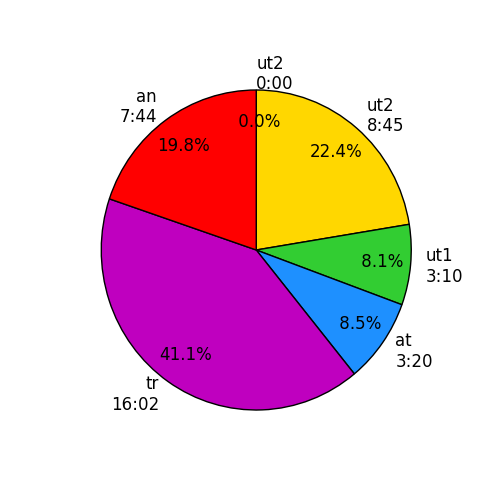
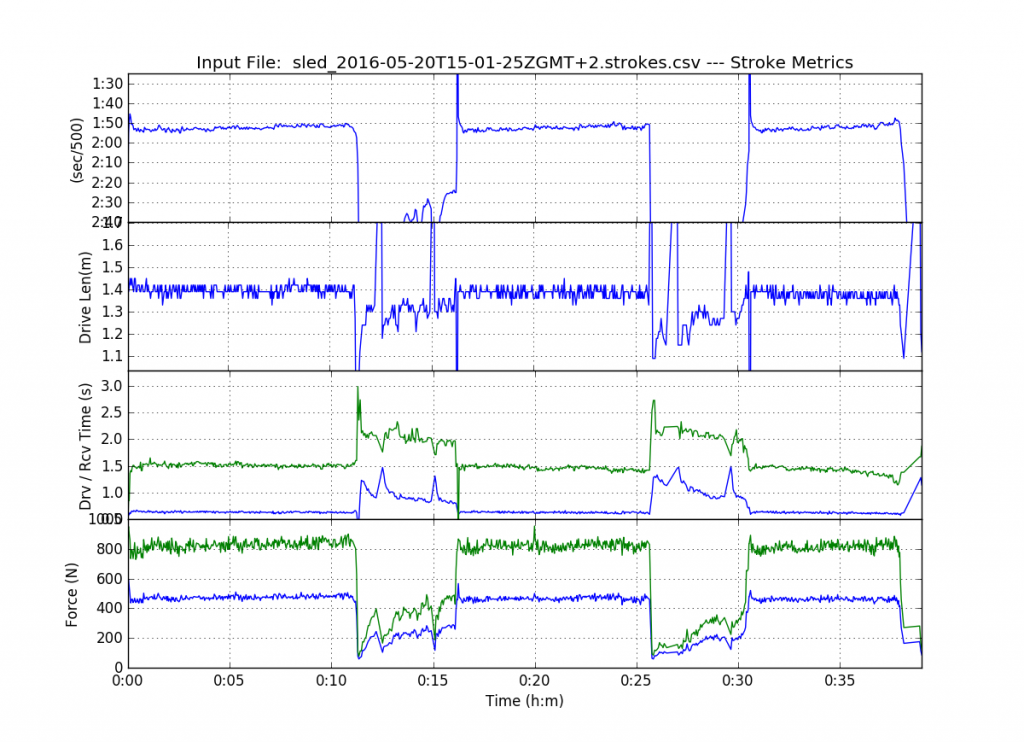
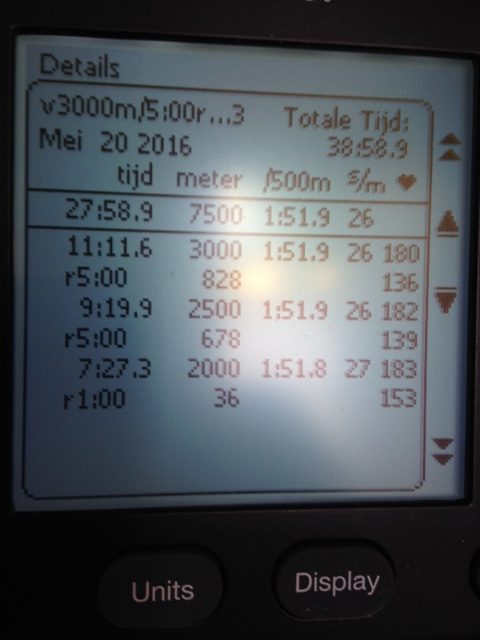
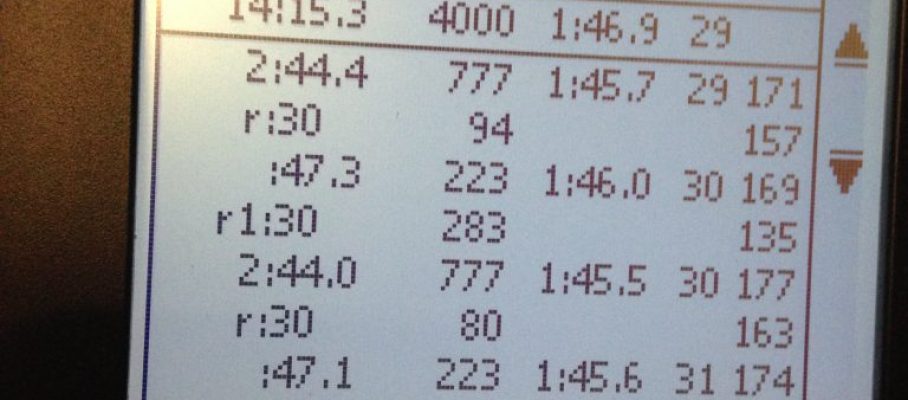





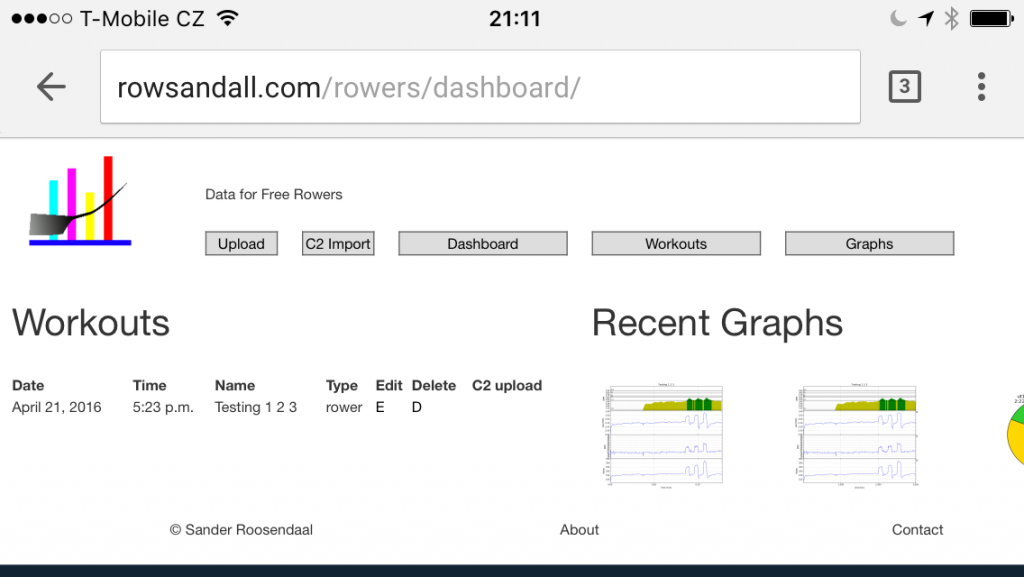

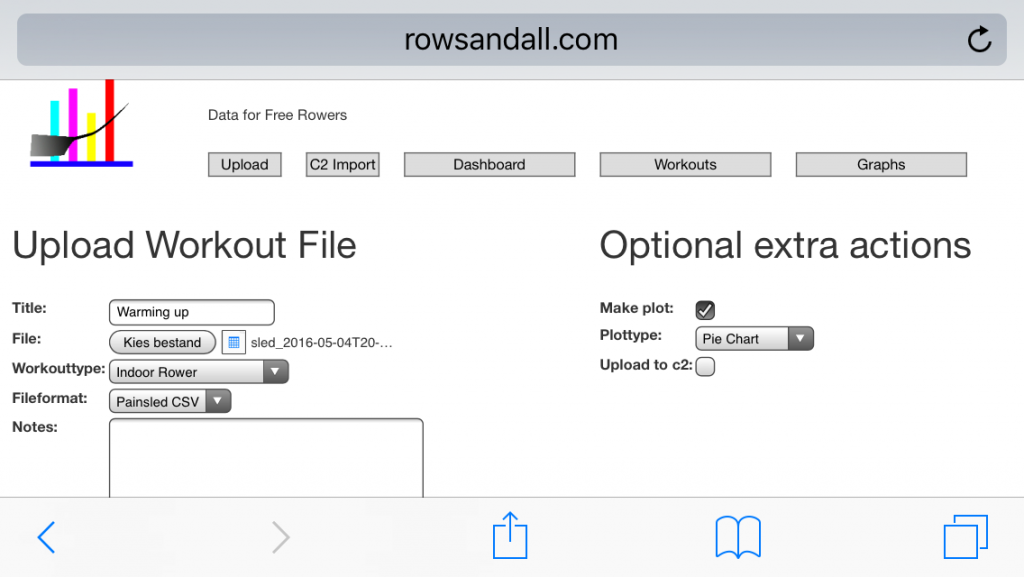
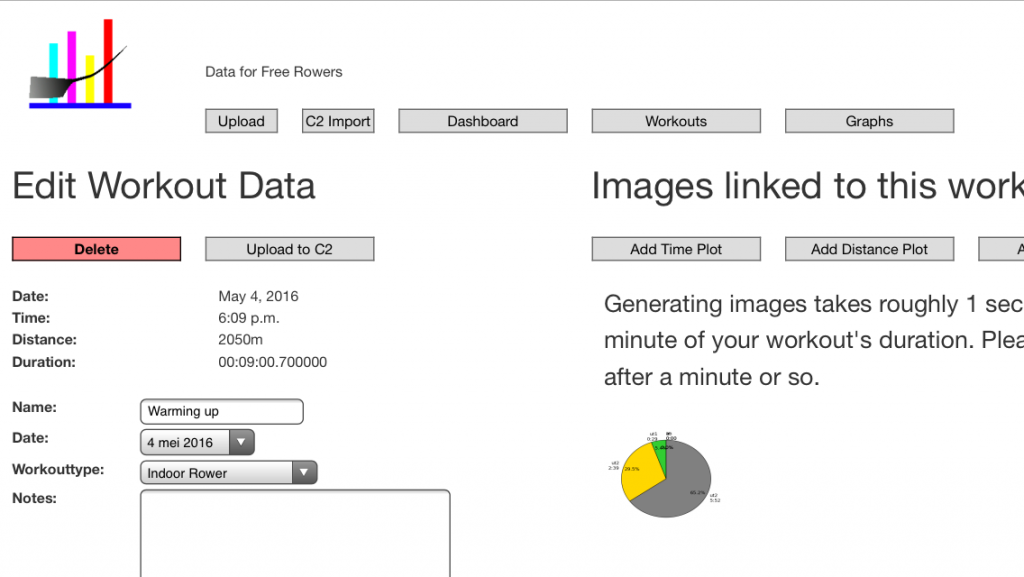
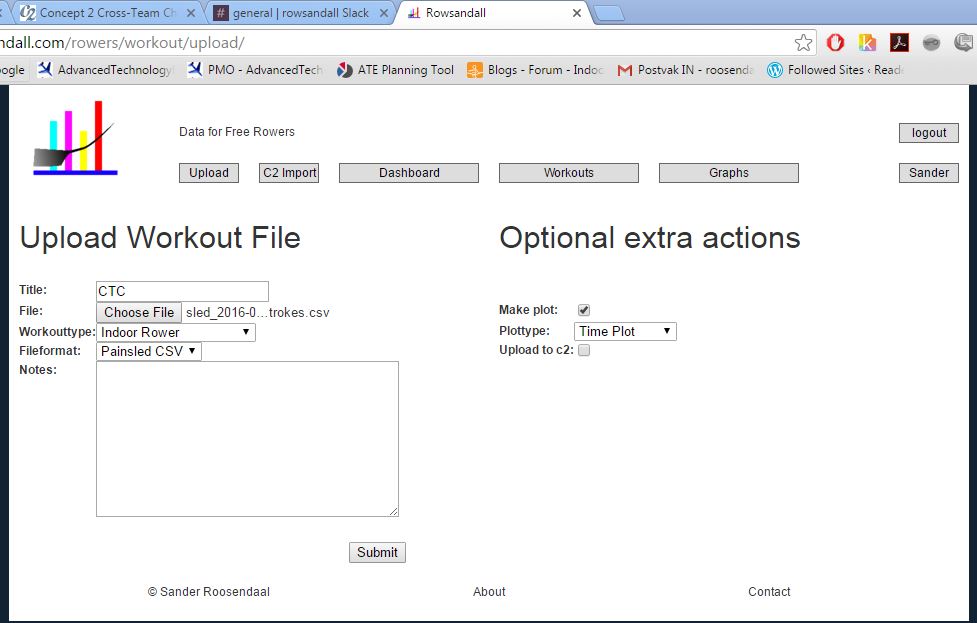

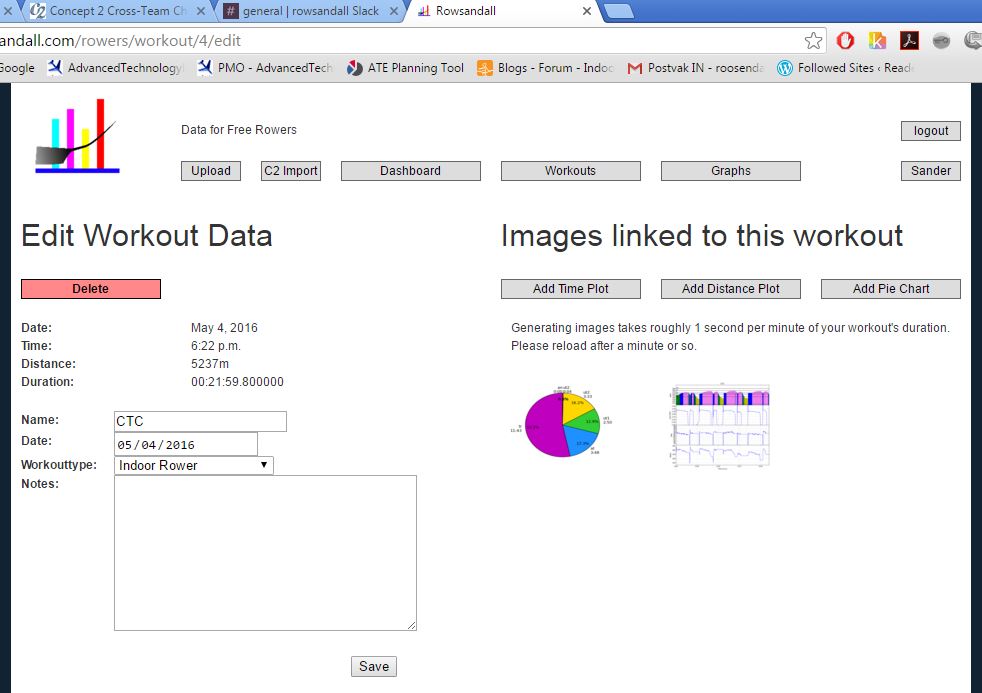
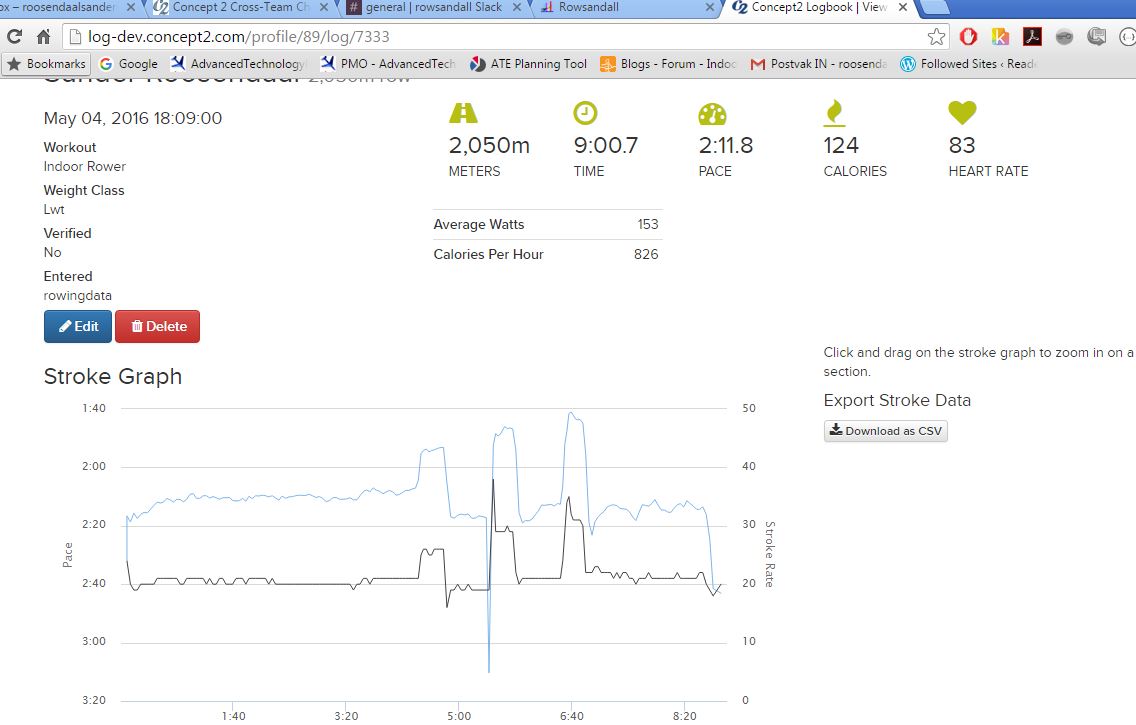
Jun 17 2016
Travel = Bad Training
Wednesday, Thursday
I wanted to go running but I didn’t manage to. On Wednesday I woke up with a headache and feeling an upcoming cold, as well as tired from the long day at the conference the day before, which ended with a welcome cocktail. I remained in bed long enough to pass the last moment to get up and get a decent training in before having to go to the venue.
Same thing on Thursday. Then it was even harder, because this was the morning after the VIP dinner. I left very early (some were still sending pictures to social media at 4am … not really pictures you want to spread by the way, but who am I to comment), but still reached bed way after midnight.
A conference is hard work. There were fun parts too:
Being back in Amsterdam was fun as well. Even though I didn’t have time to visit my family, being back in the place where I was born and spent a large part of my adolescent years was fun. Nostalgic fun.
So a lot of eating and drinking, socializing, talking, explaining, listening, etc. The good thing was that the temperatures in the auditorium were so high that my suit doubled as a wearable sauna and I actually lost weight during these few days. :-/
Friday
So today I was going to do my fun OTW training, 16×45″/60″R at 1000m race pace.
It wasn’t to be. The wind was so strong I didn’t even have to drive to the lake. No way I would be able to row a decent workout on the water.
So back to the erg.
Not fun. I did a 2k warming up, then dialed up a 45″/60″ rest workout and started doing it. I do these workouts at 1k pace, which means just under 1:40/500m. Every fourth interval I go full out to prove that the 1k pace is slower than max. Slow down if the “full out” interval turns out not to be faster than the last few intervals. I guess my explanation is confusing … please comment if you don’t get it but are interested to know.
After 8 intervals I comforted myself with the thought of being half way.
Then in the 9th interval I handed down. Just like that.
My “inner coach” (see this comment) talked to me during the rest period but couldn’t convince me to get rowing and finish the workout.
So I dialed up a 4k and rowed that one out, starting at 2:00 pace and slowly slowing down:
Tomorrow: 4x1k on the water and I should really video it.
By sanderroosendaal • Uncategorized • 0 • Tags: concept2, erg, OTE, rowing, sprintervals, training